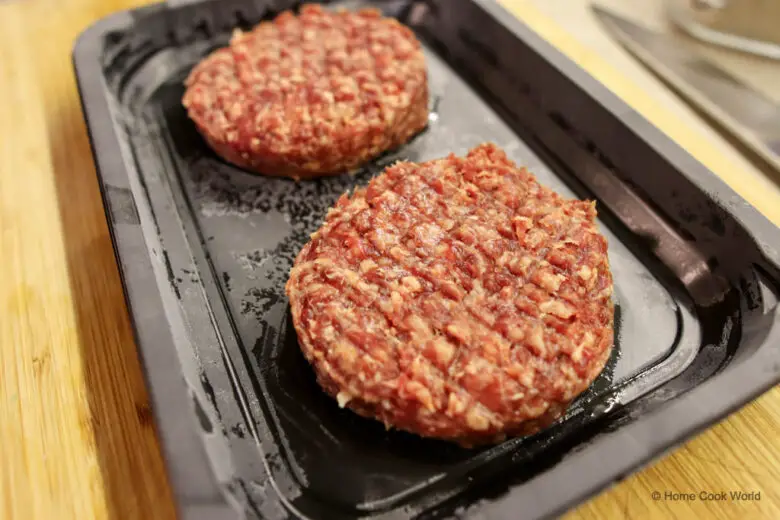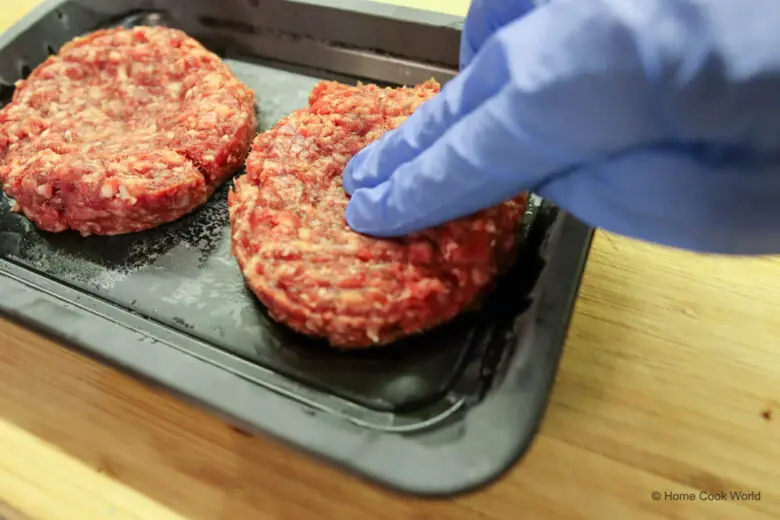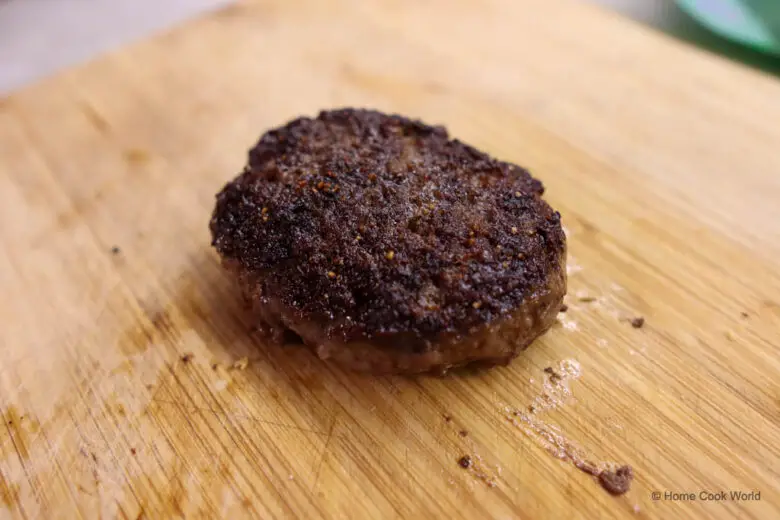Whether you’re grilling burgers on the backyard grill or pan-frying them in the confines of your kitchen, knowing how to keep the patties from shrinking is a must to avert a “Where’s the beef?” kinda situation.
Which is exactly what I’m going to be talking about—and showing you how to do, with pictures—in this blog post. If that sounds like what you came here to find out, I’ve got you covered, so I encourage you to keep on reading.
To keep burgers from shrinking when cooked, use 80/20 ground meat. Shape the patties to be wider than your buns, since they’ll shrink by up to 25% during cooking, and make a small indent at the center that prevents them from puffing up.
I’ve come to these tips through much experimentation and, out of that experience, I can tell you that they work on any kind of meat, grill or range.
Why Do Burgers Shrink When Cooked?
Heating burgers releases the juices in the meat and causes the connective tissue in it, called collagen, to shrink. This, in turn, causes the patties to contract and puff up.
The amount by which your patties shrink and puff up depends on three factors: how much fat and moisture they contain, at what temperature you cook them, and for how long.
According to Weight Watchers, most meats have the tendency to shrink by give or take 25% when cooked. This means that a raw burger patty with a diameter of 3 1/2 inches will have shrunk to 2 2/3 inches by the time it’s done.
Of course, there are a few tricks you can apply to keep them from shrinking as much, and we’re about to take a look at each and every one of them in the following few paragraphs.
Go for 80/20 Ground Meat

Fatty burgers—the kind that has so much fat, it melts and drips down through the grill grates, flaring up the charcoal—tend to shrink more than their leaner counterparts.
On the flipside, fat adds moisture and creates flavor, and leaner patties dry out quicker and won’t come out as flavorsome as I like ’em. By “leaner,” I mean any ground meat or mix of ground meats with more than 80% of lean muscle and less than 20% fat content.
Maybe it’s just me (let me know in the comments below), but I’d reach for a moist, yet slightly shrunken burger over one that stayed firm, but that turned out dry on any day.
My go-to choice for burgers is 80/20 ground chuck. The chuck, a cut that consists of the neck, shoulder blade, and upper arm of the cow, is not too lean, nor overly fatty. The ideal formula for a juicy and tasty burger that won’t shrink all that much, on the grill or stovetop.
Shape the Patties to Be Wider Than the Buns
Now that you know that burger patties can contract by as much as one-fourth during cooking, compare the diameter of your buns to that of your patties. Make sure the patties are somewhat wider, ideally by 1/4 of an inch, than the buns.
The reasoning behind this is simple: you can only keep your burgers from shrinking this much. But you can make them as flat as you need them to be to fit the buns perfectly even after shrinking.
Their diameter, after all, is something that you can control completely by shaping them before you let them sizzle.
Make an Indentation in the Burgers Before Cooking

Using your thumb or the two-three middle fingers on your hand, make an indentation at the center of the raw patty right before seasoning it with salt and pepper and putting it on the hot grill or pan.
How hard you press down on the patties matters. Several years ago, Christine Gallary at The Kitchn found, through trial and error, that a shallow indentation produced the best outcome—and I concur.
An indented burger will still shrink but won’t puff up as much. I won’t lie to you; it takes a few tries to get the diameter and the indentation of the patty just right. But, once you learn the ropes, shrunken burgers will turn into a bad memory from the distant past.
Cook on Medium to Medium-High
Some of us make the mistake of cooking our burgers on an excessively hot grill or the highest heat setting on our stoves. But there’s a problem with this technique: by the time the patties are done on the inside, they will have shrunk and burnt on the outside.
A better approach, then, is to cook your burgers low and slow, over medium to medium-high heat. Preferably, in a heavy, thick-bottomed cast iron skillet or stainless steel frying pan that distributes heat evenly.
To tell when burgers are done, insert a meat thermometer at the center of the patty. According to the USDA, ground meats’ safe minimum internal temperature is 160 °F (71.1 °C), with no resting time necessary.
As soon as your burgers reach the minimum internal temperature, they’re done. Build a burger and eat it while it’s still hot.
Oh, and have I ever told you that one of the reasons I love writing for Home Cook World is the feast that follows after every photoshoot? The two photos above say it all!


